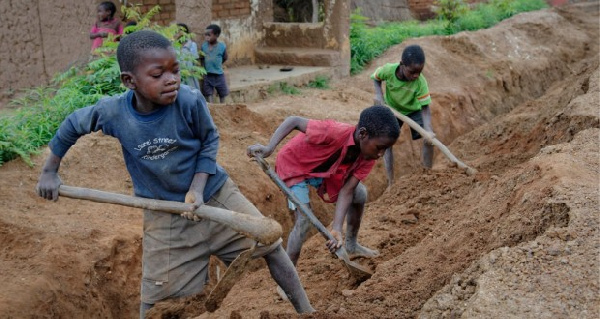CHRAJ joins global effort to commemorate 2025 World Day against child labour – Nsemkeka
The Commission on Human Rights and Administrative Justice (CHRAJ) has marked the 2025 World Day Against Child Labour with a call for urgent and united action to end child labour in Ghana.
The global theme for this year’s commemoration is “Progress is clear, but there’s more to do: Let’s speed up efforts.”
In a statement issued on Thursday, June 12 to observe the day, CHRAJ warned that while efforts have been made both globally and nationally, millions of children, including many in Ghana, are still trapped in work that is “mentally, physically and socially harmful or morally bad.”
Citing global statistics, the Commission revealed that “160 million children comprising 63 million girls and 97 million boys were engaged in child labour at the start of 2020,” with “79 million of them in hazardous work.” Sub-Saharan Africa remains the most affected region, accounting for over 86 million child labourers.
The release also paints a concerning picture of child labour in Ghana. According to CHRAJ, “Over 1.1 million children in Ghana aged 5 to 17 are engaged in some form of work. Approximately 28% of children in this age group are involved in child labour, and 20.7% work under hazardous conditions.” Even more alarming is the fact that “an estimated 500,000 working children are out of school 68,500 have never attended, while more than 389,000 have dropped out.”
While Ghana has made legal and policy strides, such as ratifying key ILO conventions and launching the Ghana Accelerated Action Plan Against Child Labour (2023–2027) CHRAJ pointed out that real-world progress remains limited.
“Although Ghana has strong legal frameworks in place, there is a significant gap in implementation, monitoring, and prosecution of violations,” the Commission stressed. It added that many child protection offices and social welfare structures at the local level suffer from “budgetary constraints and limited logistical support,” making it hard to respond to cases of child labour effectively.
Another major obstacle, CHRAJ noted, is the “fragmentation of efforts among government agencies, civil society organisations, and the private sector,” which prevents timely intervention and follow-up.
The Commission also acknowledged the role of entrenched cultural norms and poverty in driving child labour in communities. In their words, “Cultural norms and practices that normalise child labour… are often reinforced by poverty, where families feel they have no choice but to rely on their children’s labour for survival.”
CHRAJ is urging the government and all stakeholders to “update and expand national data on child labour,” and called for “comprehensive and periodic surveys, combined with robust monitoring systems,” to better understand and tackle the issue.
The Commission also stressed the need for a “harmonised digital monitoring and response system,” and advocated for stronger coordination between agencies such as the Ministry of Employment, the Ghana Education Service, and the Labour Department.
“Social Welfare Departments and other agencies must be adequately resourced and trained to detect, report, and manage child labour cases effectively,” the statement added.
On social protection, CHRAJ called for the expansion of programmes like the Livelihood Empowerment Against Poverty (LEAP) scheme, saying such support must be tied to child welfare and education to give families “a viable alternative to child labour.”

